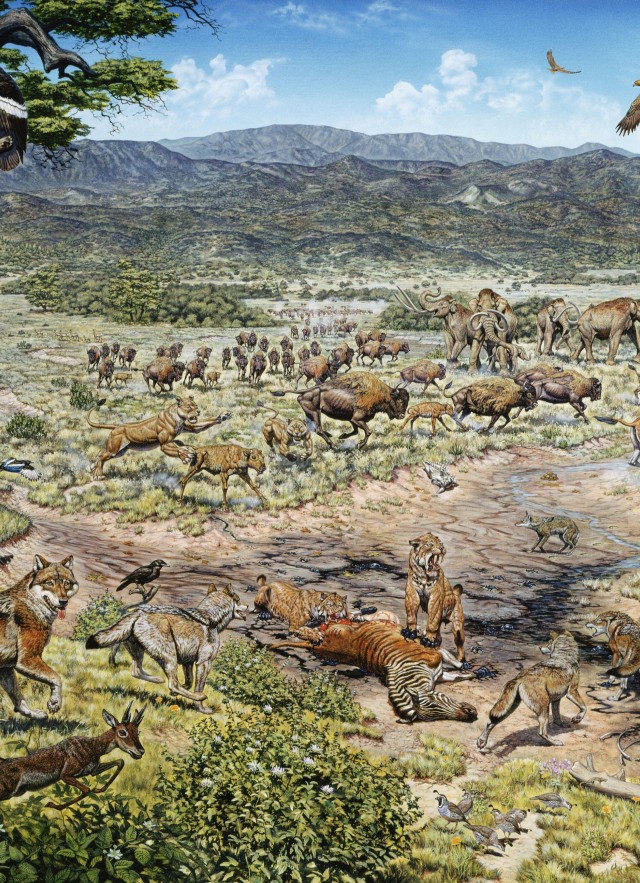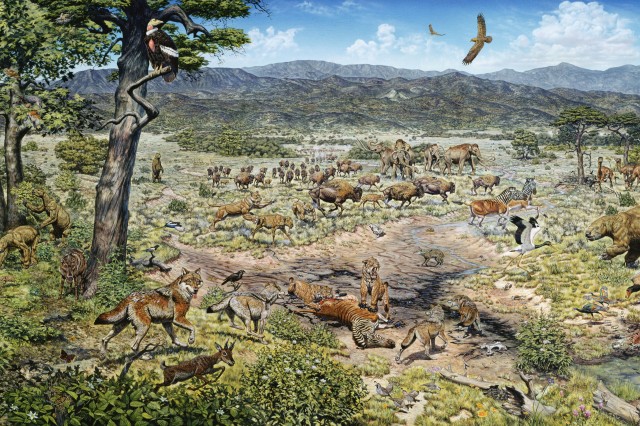Energy from the Environment
Students will use their observation skills to better understand that Ice Age Los Angeles was a complex ecosystem where many kinds of plants and animals found the resources they needed to survive.

Overview
In this lesson plan, students will use the Mark Hallett mural, Trapped in Time, to better understand the kinds of resources available for the various plants and animals that lived in Los Angeles during the Ice Age. They will record their observations, questions, and sketches to develop evidence.
Learning Objective
- Students will understand what kinds of resources the animals of Ice Age Los Angeles needed to survive.
See learning standards at the bottom.
Duration
5 minutes to introduce the activity
10-20 minutes for observations, categorizing and sketching
5 minutes to share evidence and support student claims
Materials
- Paper, journal, or notebook
- Drawing/writing utensil
Vocabulary
Resource, environment, ecosystem, carnivore, herbivore
IMAGES
Use the image below, or view this lesson and image in Google Slides.
Lesson
- Introduce the activity to your students
"Today we will be making and recording observations from an image of what Los Angeles looked like long ago during the Ice Age. We will be looking closely for the resources - things like sunlight, air, water - that these animals needed to survive. As we do this, I want you to consider these questions: do different animals need different resources to survive? Can you give an example?" -
Create an Ice Age LA Resource List
Allow students 2-3 minutes to make close observations of the mural, recording all of the natural resources they can see. Students should consider sunlight, air, water, plants, other animals, shelter, etc. - Categorize Resources
When students have finished recording as many resources as they can find, they can use another sheet of paper to sort the resources into the following categories:
"Needed by Plants" | "Needed by Animals" | "Needed by both Plants & Animals".
For example, a plant does not rely on plants or animals as a food resource, but both plants and animals need water and air.
Then, students can consider the question: "Do different animals require different resources? Can you give an example?"
Common Core State Standards
ELA.W.2.7, ELA.W.2.8
NGSS TIE-INS
Disciplinary Core Ideas:
K-LS-1-1, K-ESS2-2, K-ESS3-1, K-2-ETS1-2
Science & Engineering Practices:
Asking questions
Developing and using models
Planning and carrying out investigations
Analyzing and interpreting data
Cross-Cutting Concepts:
Patterns
Scale, proportion, & quality
Structure & function

